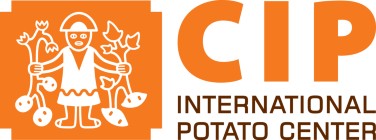
Why are CIP headquarters located in Peru?
The Andean region is the centre of origin of potatoes. The CIP genebank has the largest in vitro collection of potato types — more than 4,600 native varieties, around 3,000 of which are from Peru — and most of the potato’s wild relatives. Our genebank also safeguards one of the world’s largest sweetpotato collections, primarily from South and Central America and the Caribbean, and a large number of Andean root and tuber crops. Managing these collections and sharing germplasm with researchers and crop breeders across the globe involves protocols, a legal framework, and ISO certification to ensure secure movement of about 5,000 samples per year. The CIP genebank is pioneering cryopreservation—storing shoot tips in liquid nitrogen at -196ºC, to reduce the maintenance and regeneration costs of in-vitro plants, and improve the long-term preservation of that biodiversity. Our researchers have made great progress in improving and scaling up cryopreservation.
For more than 30 years, crop breeders have used that agrobiodiversity to develop new varieties. They use conventional breeding approaches which combine elevated nutritional levels, tolerance to heat, drought and soil salinity, and resistance to major diseases, with locally desired characteristics, such as flavour, texture, or processing quality.
What sets CIP apart from other research-for-development organizations?
CIP takes on research with potential global impact. We breed and facilitate the dissemination of resilient potato and sweet potato varieties, work in interdisciplinary teams with upstream research institutes and downstream development partners to understand the needs of farmers and consumers, and raise awareness of the importance of good nutrition. We facilitate training on the adoption of new technologies, climate change adaptation and greater market access. We enlist the expertise of social and biophysical scientists to develop successful methods. CIP scientists take a holistic agri-food systems approach that involves everything from genetics, crops, soil and water management to external factors such as evolving markets and dietary trends. Climate change adaptation
is big on our agenda, and potato and sweet potato are particularly suitable because of their short crop cycles. For many varieties, planting to harvest takes three months, which significantly reduces the risk of crop loss due to shortened rainy seasons, erratic weather and increased pest and disease pressure linked to climate change. Reducing these cycles also opens opportunities to plant them between rice, wheat and maize cropping seasons, optimizing land and water use.
What are examples of CIP’s achievements?
The use of orange-fleshed sweet potato to reduce vitamin A deficiency, a condition that weakens the immune systems of more than 140 million under-fives. More than 15 years ago, CIP demonstrated that orange-fleshed sweet potato could provide significant amounts of bioavailable beta-carotene, which becomes vitamin A in the body, and that beta-carotene content could be increased through conventional breeding. CIP identified types in its genebank with high beta-carotene levels and worked with agricultural and extension programmes in Africa to develop locally adapted varieties. Over the past decade, we have reached approximately 6.5 million households in Africa and Asia with pro-vitamin A orange-fleshed sweet potato.
Our CIP potato research teams have helped improve crop management and value chain approaches of two million small-scale farmers in Africa and Asia, driving up production yields and incomes. In Peru and China, CIP-bred varieties are planted on almost a third and a quarter of the potato growing area respectively. And in the Yunnan region of China, one CIP-bred variety, Cooperation 88, is now cultivated on more than 160,000 ha.
Over a 20-year period, Cooperation 88 is estimated to have generated as much as $3.73 billion for local farmers and consumers.
What kind of development will we see in the future at CIP?
We are finalizing the bioavailability tests on anti-oxidant-rich sweet potato and iron- and zinc-rich potato varieties which we hope will contribute to the health of millions of farmers and consumers.
By 2023, CIP and its research and development partners expect to reach an additional 15 million households with improved varieties. We will focus on making agri-food systems more productive, climate-resilient and sustainable globally.


